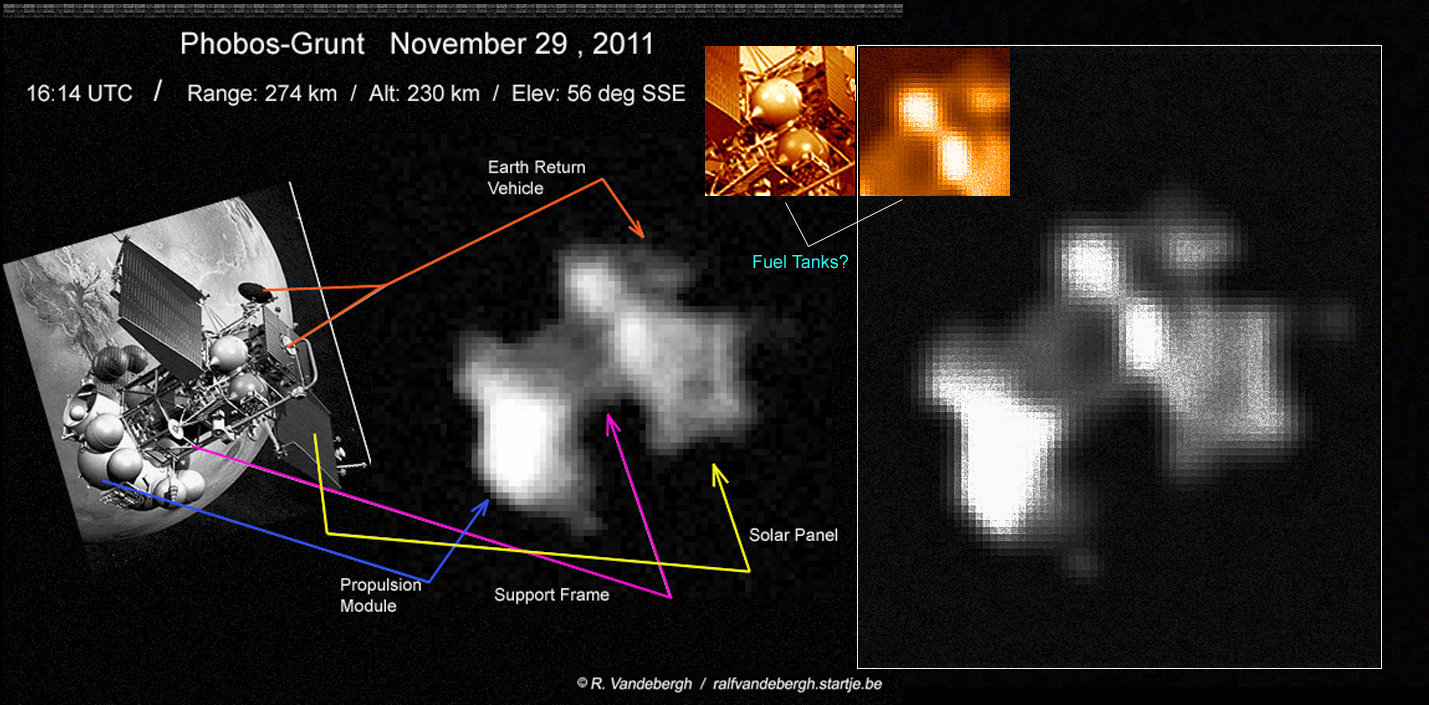[/caption]
While amateur astrophotographers have been tracking the Phobos-Grunt spacecraft in its orbit around Earth, ESA has decided to curtail operations to try to make further contact with the ailing craft. "Efforts in the past week to send commands to and receive data from the Russian Mars mission via ESA ground stations have not succeeded; no response has been seen from the satellite," ESA reported in a press release. They made this decisionafter consultation with mission managers in Russia, but teams will remain available to assist if there is any change in the situation.
ESA teams from a tracking station at Perth, Australia had established contact with the Russian spacecraft on November 22 which was the first signal received on Earth since the mission to Mars' moon was launched on November 8, 2011. Since then, however, weren't able to maintain contact.
Above,
Ralf Vandebergh
from the The Netherlands has imaged the spacecraft in orbit and this graphic compares the images to the components on pictures of the spacecraft.
Below, and a video from another astrophotographer in The Netherlands tracks the spacecraft during a night pass, and another image from Vandebergh shows color differences between the solar panels and the main body,
Marco Langbroek captured this footage from near Leiden, The Netherlands on Nov. 28, 2011. See more at
his website
.
[caption id="attachment_91504" align="alignleft" width="580" caption="Noticable color differences between the main body and solar panels of Phobos-Grunt. Credit: Ralf Vandebergh"]
[/caption]
 Universe Today
Universe Today
